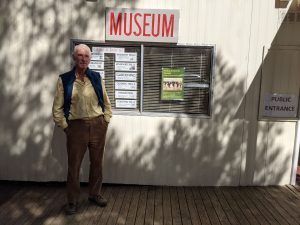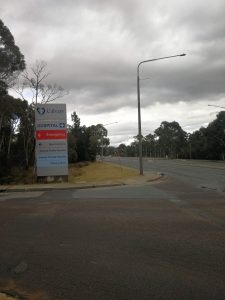Potential flood victims ‘left high and dry’
By ALEXANDRIA CAUGHEY
THE recent (March 2012) deluge of rain across much of south-east Australia brought fresh flooding and bitter memories of the 2011 floods that wreaked havoc across Queensland and Victoria. But there is an anomaly in working out who gets help from the government.
The 2011 floods highlighted the lack of financial protection for infrastructure and property against widespread flooding. Governments were unable to meet the cost of rebuilding entire communities and insurance companies hid behind the legal jargon of their policies.
The Federal Government made a promise to learn from the tragic event that took not only countless homes and livelihoods, but 37 lives, and another 14 people still listed by Queensland police as missing.
Those affected by the 2012 flood will be able to seek emergency government assistance, if they live in a shire that has been classified as a natural disaster zone. As of March 9 2012, a media release from the NSW Ministry for Police and Emergency Services said that 46 council areas had a natural disaster declaration.
What about individuals and businesses that have had property damage as a result of the very same flood waters that don’t live in one of these areas? They will not be eligible for government assistance.
Queanbeyan was severely impacted by the 2012 flooding with residents evacuated, the shopping centre and local businesses flooded and road closures causing traffic chaos. However, as there was minimal damage to property, the Queanbeyan region has not been included in the natural disaster declarations.
Queanbeyan City Council spokesman Ricky Tozer said that the council was still cleaning up from the 2010 floods due to a lack of state funding and the most recent downpour will stretch resources even further.
“Clean-up is estimated at $500,000…the clean-up has already begun but will take the best part of six months,” he said.
Mr Tozer said that the council struggles to get enough money and that local residents affected by the floods will not receive any help from the government.
“No (there will not be financial assistance,) as Queanbeyan is not a natural disaster zone . . . ,” he said. ‘There was not much damage to residential property.”
However, a media release issued by the Queanbeyan branch of the State Emergency Services stated that the organisation received more than 100 calls for help during the event, demonstrating the widespread impact of the flood.
Meanwhile, in the adjacent shire of Cooma, residents affected by the same floodwaters will be eligible for assistance.
How is it that when all Australians are taxed based on the same criteria, that tax-funded assistance after a natural disaster will be given out to certain victims and not others?
The NSW Ministry for Police and Emergency Services refused an interview on the issue but Senior Project Officer Adam Tran issued this short statement.
“Whilst certain forms of natural disaster assistance is (sic) only available to applicants within a natural disaster declared area, other forms of assistance are not restricted in this way,” it said. “In particular, the availability of immediate assistance for food, clothing and accommodation for people who cannot remain in their homes or who cannot return to their homes due to an emergency is not linked to the declaration of a natural disaster.”
The NSW State Disaster Plan issued by the ministry defines a natural disaster as follows.
“A natural disaster is a serious disruption to a community or region caused by the impact of a naturally occurring rapid onset event that threatens or causes death, injury or damage to property or the environment and which requires significant and coordinated multi-agency and community response.”
This definition excludes victims in minimally affected areas. But when a natural weather event causes damage to property, the personal loss is not minimised by the level of destruction to surrounding properties.
After the high number of victims abandoned by their insurance policies after the 2011 floods, companies were forced to change their flood protection policies to be clearer or all-encompassing. Major insurer AAMI announced that as of February 5 2012, all personal Home Buildings and Home Contents policies would have flood cover unless the customer has specifically requested it be removed.
While insurance policies will now cover the damage, for many Australians home insurance is a luxury they just cannot afford. Real estate website, realestate.com.au placed the 2011 median property price in Queanbeyan at $436,500. To insure a property for this value, major insurer NRMA quoted $904.55 online for 12 months home insurance. This does not include contents insurance.
The government introduced a flood levy to the 2011-2012 financial year to help pay for the repair of the public infrastructure damaged in the 2011 floods. However, this levy is a once-off tax and will not create a funding supply for future natural disasters.
After all the loss and heartbreak, promises have not been kept. Some of the most vulnerable members of the community, such as low-income residents and the elderly are still at the mercy of inadequate, bureaucratic policies. When all is said and done, people in our own backyard could lose everything and have nowhere to turn.




Be the first to comment!